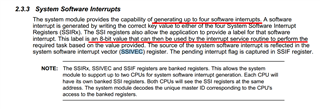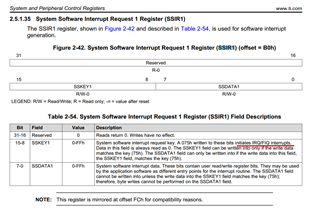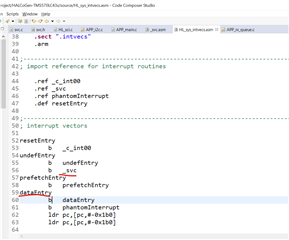Hi team,
Here's an issue from the customer may need your help:
It is clear how soft interrupts are triggered, but the customer don't know how to register the soft interrupt exception handling function.

Could you help check this case? Thanks.
Best Regards,
Cherry




